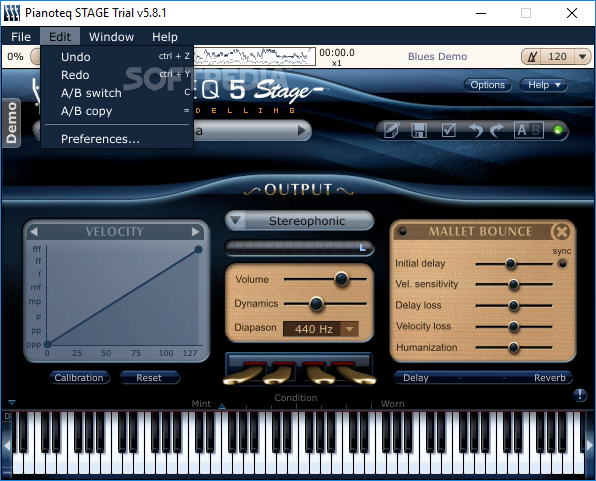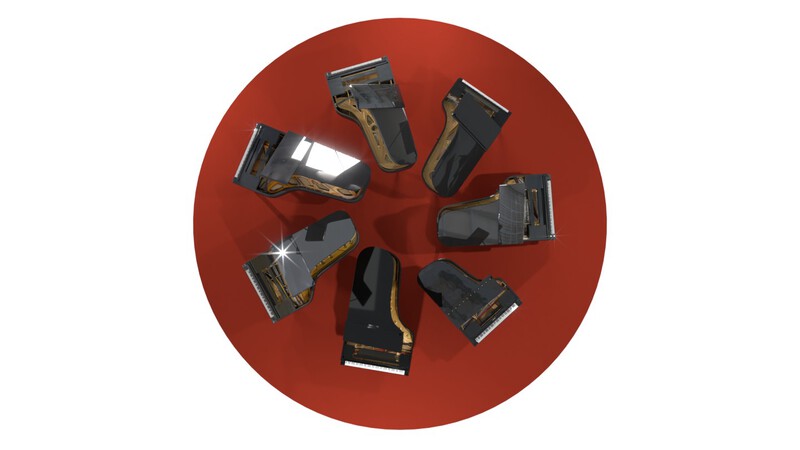
In comparison to morphing, Layering might seem a less interesting proposition, but that’s not necessarily the case. Finally there’s a ‘Smooth x2’ option to run two Pianoteq engines in parallel, which doubles CPU use but achieves entirely smooth morphs even if there are parameter step‑changes, via crossfading.

There’s also a ‘Freeze’ feature which lets you select parameters to be excluded from a morph: that helps overcome difficulties with switch‑ or toggle‑type parameters (like Effects enables) that can’t be smoothly transitioned.

A Random button can give pleasant surprises, whilst Flatten makes any given morph into a new preset in its own right, with the potential to become an ingredient in a new morph. There are some really useful supporting features. Excitingly so, I thought, and yet still musically persuasive and inspiring, as opposed to weird or ugly. However, with morphing you’re messing about apparently much deeper in the mathematical engine room, and the results can end up far removed from any of the starting‑point ingredients. Tweaks of voicing or design parameters for individual instrument’s could already yield interesting distortions of them. And if that weren’t enough, you can add up to eight ingredients in a morph, for really strange, genetically scrambled hybrids with lots of mothers and fathers.Īside from being fundamentally a very intuitive way of deriving new sounds, morphs must surely be one of the most creatively fruitful. Everything is up for grabs: Wurlitzer/xylophone clashes, or tubular bell/virginal mash‑ups. Strange and wonderful chimeras would emerge: pianos with bizarre overtone structures or muted decay phases. I liked taking one of the pristine grands, for example, and morphing it with a rough, inharmonic Hand Pan or Steel Drum.

Morphing between presets then proves to be a fascinating thing. The user interface takes on styling that’s appropriate to the most dominant ‘ingredient’. Here, a bizarre mix of grand piano, hand pan, and Hohner Electra‑Piano. The new morphing feature is like some kind of sonic DNA splicing, letting you create entirely new instruments by melding together existing ones, in different proportions. It’s not especially pretty but it could hardly be quicker or more intuitive. There will also be a vertical crossfader between the slots, which acts as a macro for the slot faders, and determines the relative dominance of each preset in the morph. Working in a dedicated (and detachable) panel you load presets for any of your instruments into slots that have accompanying mute and solo buttons, and which have a horizontal travel fader that controls the intensity of that ‘ingredient’ (Modartt’s terminology, suitably culinary perhaps).
#Modart pianoteq 5 tpb pro
I was excited to try the new morphing features in the Pro version I had on test, and I must say they did not disappoint: they enable a new kind of sound design. ‘Double polarisation’ takes account of string vibrations that can emanate in any direction into the soundboard, and is said to provide more complexity, a three‑dimensional character, and supports acoustic piano bass notes that can sustain as long as a couple of minutes.Īudio titled Capri At Dawn - Niclas Fogwall Morph The Cat Perhaps just as important, though, is yet another refinement of the underlying modelling engine, which promises to improve the sound of the entire existing instrument line‑up. The real thing would cost you over $200,000 to buy new.
#Modart pianoteq 5 tpb update
That’s an update of the already no‑expense‑spared 8’11” model D, and it adds motorised‑key replay facilities. The second headline addition is a new piano, a brand spanking American Steinway Model D ‘SPIRIO|r’. Layering is a simpler and more familiar concept, but can make for a different kind of sophistication. Morphs allow you to create hybrid instruments that don’t exist in reality by blending aspects of two or more donors. The first is a morphing and layering engine. This latest version, Pianoteq 7, adds two new features.

That makes it computationally intensive, potentially, but also laughably small in its installation footprint on your computer: still only around the 50MB mark (which by my calculations makes it about 0.0007 the size of something like Synthogy’s Ivory II) and requiring only 256MB RAM. In case you haven’t heard of it already, it’s a virtual instrument specialising in acoustic and electric pianos, mallet instruments, harps and harpsichords that’s based on principles of acoustic modelling, as opposed to sample replay. It’s been fascinating to follow the progress of Pianoteq, by French company Modartt, since its debut in 2006. Pianoteq 7 introduces new morphing features and an even more realistic modelling engine. Users of previous versions will feel right at home: all the important changes are under the largely unchanged surface. Pianoteq 7 loaded up with its new New York Steinway D.


 0 kommentar(er)
0 kommentar(er)
